Concrete Structure at Korčula Bus Station to be Removed
The preparations for the removal of the (some would say ugly, not sure how many those who wouldn't call it there are at all) concrete structure above the Korčula bus station, in the centre of the town, have started, and it is expected that the removal should be completed by Easter.
The current appearance of the Korčula bus station is set to change drastically, and is a part of a larger project that includes a private company owning the bus station itself, the town of Korčula and the Korčula ACI marina (which is right next to the bus station). ACI Marina Korčula director Marko Skokandić, who happens to currently be the head of the Town Assembly of Korčula explained to Dora Lozica at Dubrovački Vjesnik what the plans are:
The marina has purchased the bus station from the private company, and the removal of the concrete structure is the first step (in addition to it not being esthetically pleasing, it is also getting dangerous for anything under it). The actual removal will not be easy, and the bakery and the kiosk located in the bus station building will temporarily be closed, and building protected. The traffic in the zone will be slowed down, and the buses will let people get on and off them at the entrance to the Marina, right next to the station.
After that phase, the second step in the plan is to build an underground garage with 200 parking spots, which should solve the problem of parking in Korčula. The new ACI hotel is also planned, with highest standard of service, and the location where the bus station is will be turned into a roundabout for buses and taxis. And once the Liburna building across the street is fully restored, the entrance to Korčula will be completely different. The bus station should be moved to a different location, near the health center, where another roundabout should be built.
All of those steps will come after the tourist season of 2019, including the reconstruction of the breakwater in the marina.
Energetic Transition Process Begins on Croatian Islands
The Clean Energy Secretariat on EU islands held an energy transition workshop attended by representatives from the Croatian islands of Brač, Cres, Hvar, Korčula and Lošinj last week.
As Morski writes on the 18th of March, 2019, Croatian islands officially launched an energetic transition up and down the coast. Back at the beginning of February this year, the Secretariat's initiative for clean energy for the EU's islands, which was initiated by the Croatian MEP Tonino Picula, announced a list of 26 European island communities that will receive expert and advisory support for the energy transition strategy in the coming period, writes Pokret otoka (Island movement).
Among the 26 selected islands are four Croatian island communities: The Cres-Lošinj archipelago and Brač, Hvar and Korčula. The two-day workshop, organised with the cooperation of the cities of Cres and Mali Lošinj, the OTRA Island Development Agency, LAG Kvarner Islands and Pokret otoka (Island movement) as local partners, gathered forty representatives of selected islands that, with expert assistance, will set the first foundations of energy transition plans. The gathering took place last weekend and this is the first of a total of ten workshops which will be carried out by the Secretariat for the EU islands in the forthcoming period.
Representatives of transition teams from all five islands participated in the workshop in Mali Lošinj, which will work on strategy development in cooperation with partners and experts in the coming period. The goal of the two-day workshop, besides transferring knowledge and experiences from different areas, has also been gathering, networking and strengthening the island's stakeholders for further cooperation in the energy transition process.
The Cres-Lošinj archipelago, set as one of the six European pilot projects, should have its energy transition plan should be ready by the end of summer 2019. The remaining twenty islands, including Brač, Hvar and Korčula, will have their plans in place by 2020. Despite the abundance of renewable energy sources, many islands currently depend on fossil fuels and energy imports from the mainland. The transition to clean energy can help the islands not only become more self-reliant and prosperous, but also open up new opportunities for employment in their communities and encourage further direct development of the islands.
The other islands that will be pilot projects in the initiative are the Irish Islands, Sifnos in Greece, Salina in Italy, La Palma in Spain and Culatra in Portugal. Twenty other islands will follow their development and enjoy the suppor of experts in the same direction. An expert team of the Secretariat for the islands will produce guides to initiate energy transition, encourage community involvement and discuss project financing in the forthcoming period.
Croatian islanders will have the opportunity to cooperate with each other, create a network of good practices, educate themselves and and participate in various events. It is important to emphasise the fact that the whole initiative is based on the "bottom up" approach, and the primary principle of transition success is based on the involvement of all local community stakeholders, which include the representatives of local self-government units, entrepreneurs, educational institutions, and of course civic initiatives.
Make sure to follow our dedicated lifestyle page for more information on Croatian islands and much, much more.
Click here for the original article by Ana Marija Jakas for Pokret otoka (Island movement)
Zagreb Archaeological Museum Promoting Lumbarda Psephisma
ZAGREB, March 11, 2019 - A series of events dedicated to Lumbarda Psephisma, a stone inscription about the founding of an Ancient Greek settlement on the southern Croatian island of Korčula, will start on 13 March, and includes nine lectures about the archaeological heritage of the municipality of Lumbarda located on the eastern tip of the island.
A hundred and forty years ago, segments of the monument were discovered, which represents the founding document for the establishment of a colony which was set up by the Greeks from the nearby island of Vis, at around the 3rd century BC, the head of the Archaeological Museum in Zagreb, Sanjin Mihelić said on Monday while presenting the findings of the current archaeological activities on Korcula and results of the reconstruction of the monument.
Lumbarda Psephisma is the oldest stone inscription found on Croatian soil. It also contains information about the allotment of land among the then Greek settlers on the island of Korčula.
Next spring, the Zagreb museum will prepare an exhibition about this matter in the National Archaeological Museum of Athens, and the event has been prepared within the bilateral cooperation between Croatia and Greece.
That exhibition about Lumbarda Psephisma will be the culmination of cultural cooperation during Croatia's chairmanship of the European Union in the first half of 2020.
Greek Ambassador to Croatia, Stavros Tsiepas, congratulated the Zagreb museum's director and the team of archaeologists and researchers engaged in the digs and presentation of the relevant finds.
More news about Korčula can be found in the Lifestyle section.
The Islands of Korcula and Vrnik to Host Travel Writing Workshop
Professional travel journalists will teach a weeklong course about the skills required to write for publications.
Shorthand Travel, a team of journalists teaching writing workshops in Croatia, has partnered with Vrnik Arts Club to present travelers with an opportunity to explore the Croatian coast and islands while learning how to live and work from anywhere in the world. The travel writers and teachers for the course are Alex Crevar and Molly Harris—regular contributors to The New York Times, National Geographic, Lonely Planet and BBC Travel, among others. Their Korcula workshop will occur 23-30 June 2019.
Students will stay on Korcula during the weeklong course and take a 10-minute boat transfer for morning lectures on the island of Vrnik. Each day, travel writers will gather for instruction and assignments before heading out to do their reporting. Scheduled group excursions, such as visiting local artists or winemakers, will help students uncover angles on which to report and write.
Lecture topics will include investigating travel-story genres, developing angles, pitching well, and following industry ethics and etiquette. The instructors' combined and varied experience will provide students with balanced insight and informative tips.
The workshop fee of $1,950 (1,710€) includes some meals, morning lectures, afternoon critiques, crafting pitches, editing assignments and follow-up communication to help writers place stories after the course ends. Airfare and Airbnbs (though the workshop will assist students to find specific lodging) are not included.
For more information and news about the course or the instructors, refer to their website, www.shorthandtravel.com/about . Feel free to reach out with questions or assistance needs by email: This email address is being protected from spambots. You need JavaScript enabled to view it..
Cres, Losinj, Hvar, Brac, Korcula in 1st EU Clean Energy Transition Islands Initiative
Brussels, 18 February 2019 - Today, 26 European islands have officially launched their clean energy transition with the support of the European Commission’s Clean Energy for EU Islands Secretariat.
In the first phase, 6 islands, the Aran Islands (Ireland), the Cres-Lošinj archipelago (Croatia), Sifnos (Greece), Culatra (Portugal), Salina (Italy) and La Palma (Spain) will develop and publish their clean energy transition agendas by summer 2019. The other 20 islands will do so by summer 2020.
These islands are:
• Hvar, Croatia
• New Caledonia, France
• Pantelleria, Italy
• A Illa de Arousa, Spain
• Brač, Croatia
• Crete, Greece
• Azores, Portugal
• Gotland, Sweden
• Korčula, Croatia
• Samos, Greece
• Ibiza, Spain
• Öland, Sweden
• Kökar, Finland
• Cape Clear, Ireland
• Mallorca, Spain
• Orkney, UK
• Marie-Galante, France
• Favignana, Italy
• Menorca, Spain
• Group of Off-Grid Scottish Islands, UK
Dominique Ristori, Director-General for Energy at the European Commission, said:
“The 26 islands selected display a remarkable potential and enthusiasm for developing strong and lasting multi-stakeholder collaborations around the clean energy transition. By embarking on this path, not only will they become more energy self-reliant and prosperous, but also provide inspiring examples for other islands and Europe as a whole. This in turn will help the EU achieve its ambitious climate and energy targets.”
There are more than 2200 inhabited islands in the EU. Despite having an abundance of renewable sources of energy, such as wind, solar and wave energy, many of them currently depend on expensive fossil fuel imports for their energy supply. The clean energy transition can help islands not only become more self-sufficient and prosperous, but also unlock new employment opportunities in their communities.
The objective of the Clean Energy for EU Islands Secretariat is to help as many European islands as possible embark on and advance their clean energy transition in a way that includes the whole island and its stakeholders. Based on experience with successful transition processes, the key to success is to involve all levels of governance of the islands - citizens, municipalities, local businesses, universities and schools – as well as relevant stakeholders from the mainland and bring them on board to actively support and shape their own transition.
Croatian MEP Tonino Picula said: "Islands are becoming more and more visible on the European agenda. The support for 26 islands throughout the Union is an important step in making island communities torchbearers in clean energy transition. This is a first, but an important, step in securing permanent EU assistance to islands. Congratulations to everyone!"
The 26 islands were selected based on their potential for establishing a high-quality transition process with the support of the Secretariat. In order to serve as inspiring examples for as many European islands as possible over the coming years, special attention was paid to including islands covering a broad variety of geographic and contextual conditions.
To learn more about the project and follow progress on its interactive map, click here.
From Asparagus to Grk, Why Korcula is a Top Spring Gourmet Destination
February 13, 2019 - Korcula is quietly establishing itself as a luxury gourmet destination, and if you want to see it truly shy, late April is the time to be there.
After the snow and the cold, the sun is beaming through my Varazdin window, and thoughts turn to one of the nicest times of year - Spring in Croatia.
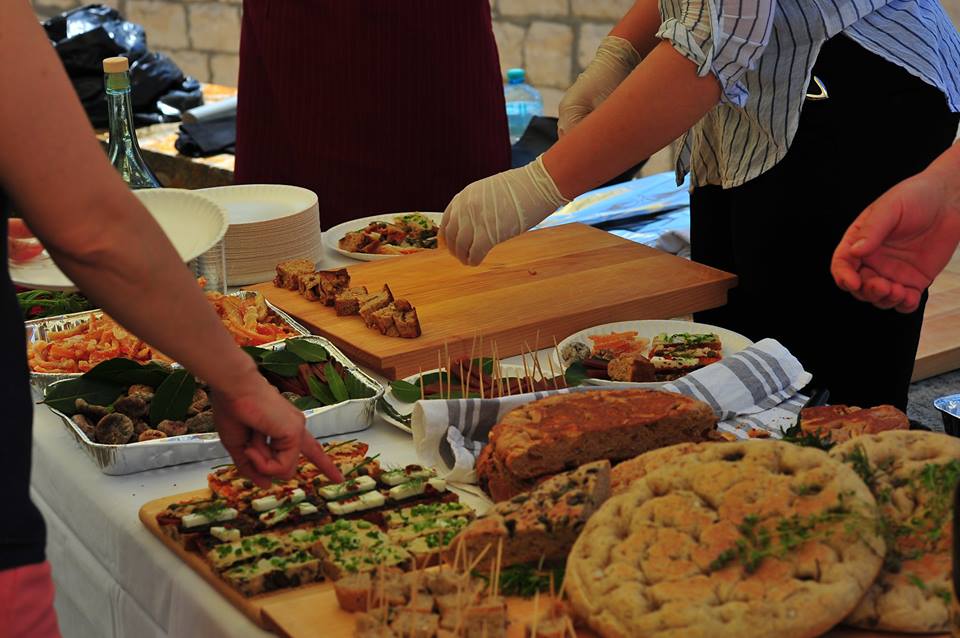
One of my highlights of 2018 took place in Spring last year, a rather delightful discovery on Korcula. The weather played fair, and the long May bank holiday weekend was spent at the 2nd Korcula Spring Food and Wine Festival, Korculanske Pjatance.
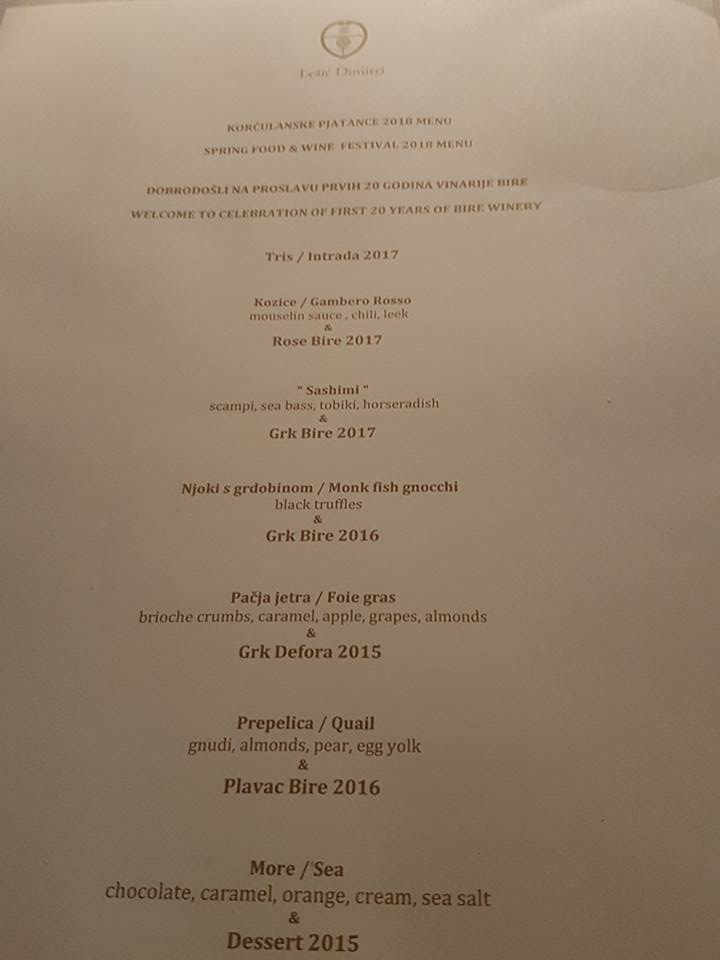
A group of restaurants from the town and surrounding villages put on an outstanding selection of dinners, cooking classes, workshops, wine tastings and live music that really worked well. Included were two of the stars of the Dalmatian dining scene, Michelin-recommended Lesic Dimitri and Konoba Mate in Pupnat. We were fortunate to arrive for one very special occasion, the 20th anniversary of the Bire winery in Lumbarda, famous for its Grk, where the Bire wines were paired with a 5-course classic from Marko Gajski, resident chef at Lesic.
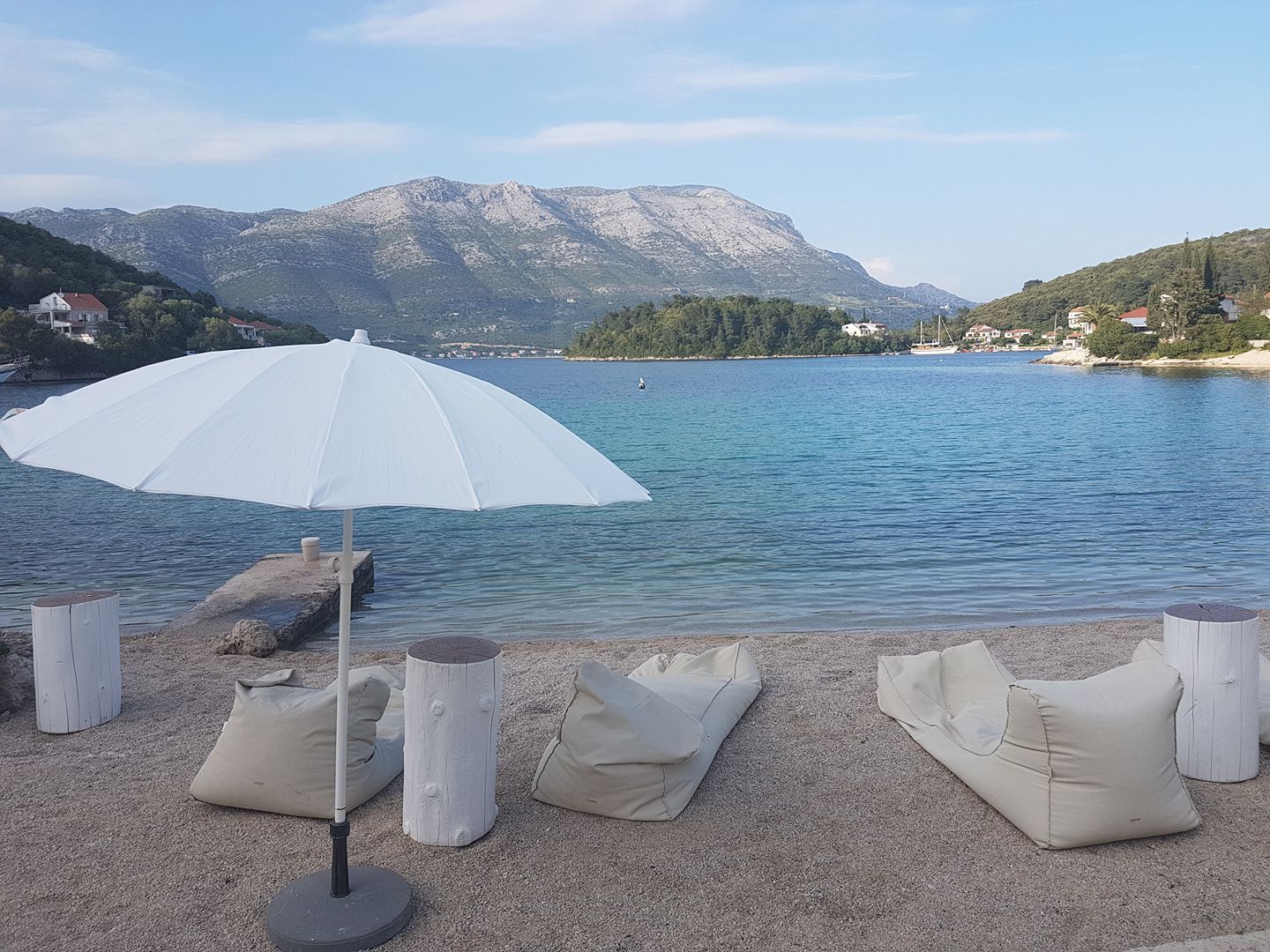
With accommodation right on the beach at Tara's Lodge at Zrnovska Banja, the kids took to the Tara motto of Eat, Sleep, Beach, Repeat with gusto. In between, there was foraging for herbs in the woods near Pupnat for a dessert workshop with celebrity pastry chef Petra Jelenic, and a pasta-making masterclass with Filippi, which my daughters enjoyed immensely. A wonderful family event.
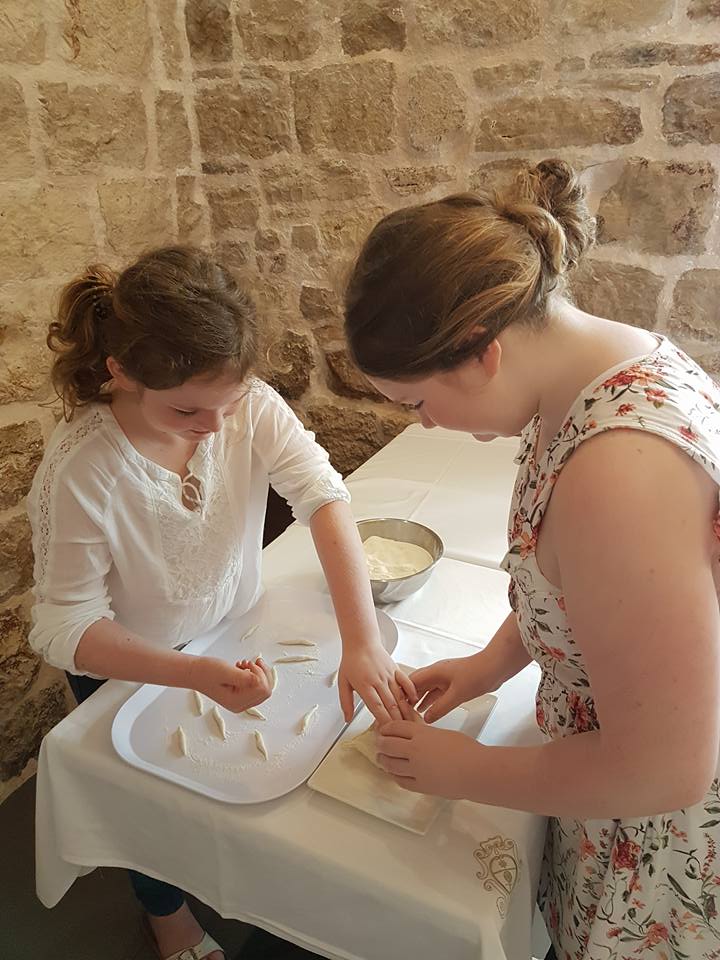
Korculanske Pjatance returns this year from April 26-30, during the Easter Holidays, so there is even more reason to head down to this lovely Dalmatian island. You can follow the event on Facebook.
Stay a few days longer, until May 3, and enjoy yet one more festival, Sparogijada. If you have never tried wild asparagus before, you are truly missing out. Much more bitter and concentrated than traditional asparagus, it is one of the most eagerly-awaited times of year for locals, who disappear into the fields to forage for their own supply.
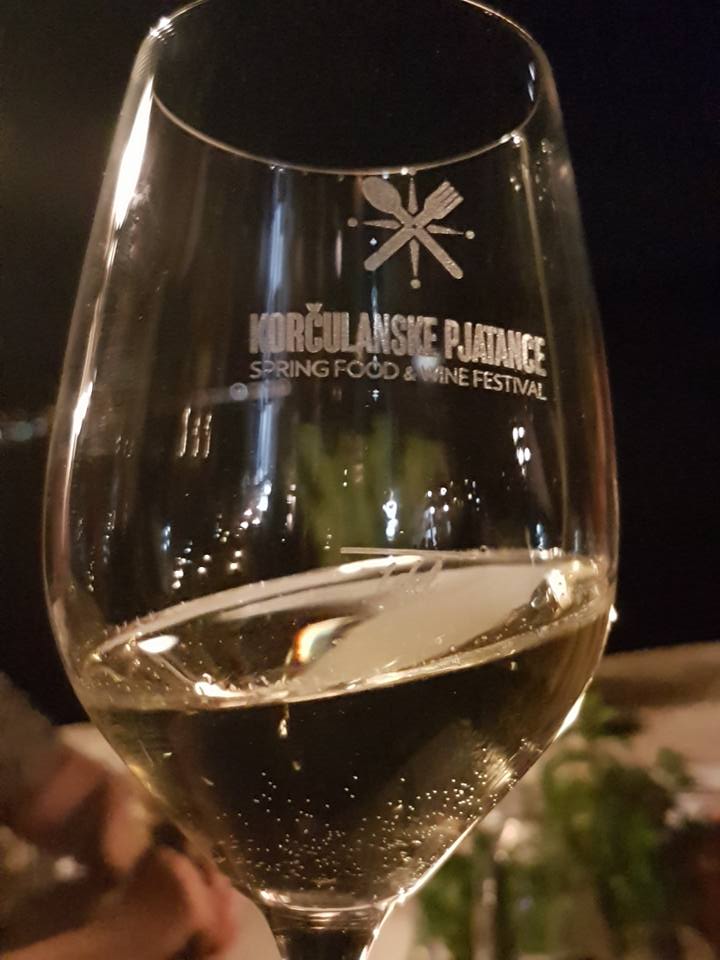
You don't have to do that, as the asparagus comes to you in the form of the Sparogijada festival, which is described as follows by the Korcula Tourist Board:
Taste traditional dishes made with asparagus, a delectable plant found in Korčula's nearby fields.Taste traditional dishes made with asparagus, a delectable plant found in Korčula's nearby fields.
The asparagus is a favourite seasonal ingredient picked during the April-May period.
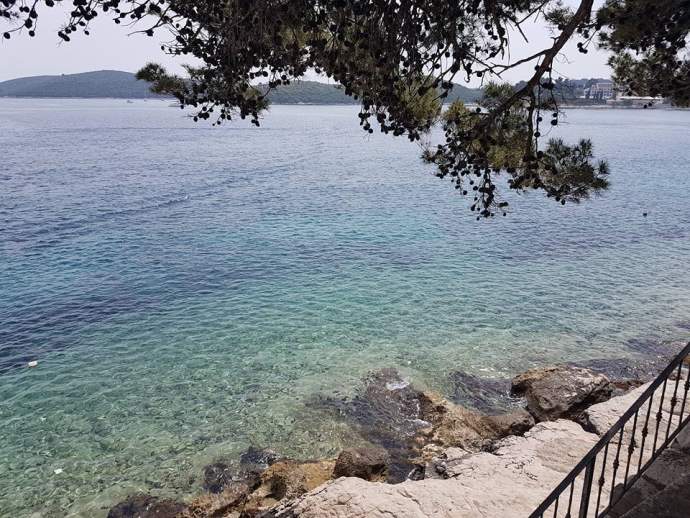
Students of Korčula culinary school prepare various dishes with asparagus and other local ingredients. For those with a sweet tooth, they prepare traditional Korčula cakes and pastries.
Keep up with the latest from this lovely island with our Total Korcula section.
Sweet Korcula: Sweeties of Korcula Grannies - 20. Anizini
February 7, 2019 - Sweet Korcula, an island with a seemingly endless supply of fabulous traditional home-made cakes and desserts. We are very grateful to Franica Tasovac for allowing us to serialise her excellent books called Sweet Korcula, Sweeties of Korcula Grannies (in English). It is a collection of no less than 30 ancient recipes for Korcula cakes and desserts, lovingly put together into a book. A delightful souvenir or gift for gourmet friends. Franica has kindly allowed us to serialise the recipes on TCN, and we will be bringing you a recipe a week from the kitchens of Korcula's grandmothers throughout the year. You can read Claudia Tarle's lovely introduction here.
ANIŽINI
3 eggs
pinch of salt
120 g sugar
1 teaspoon anise
1 tablespoon grape brandy
150 g flour
1/2 teaspoon baking powder
Heat the oven to 175°C.
Beat anise in a mortar, or chop it and pour with brandy.
Mix egg whites into firm snow. Blend yolks, sugar and salt into a foamy mixture.
Add brandy and anise and mix everything together. Add flour and snow alternately and mix slowly. Pour the mixture into the sheet metal coated with greasy paper and bake for 20 minutes.
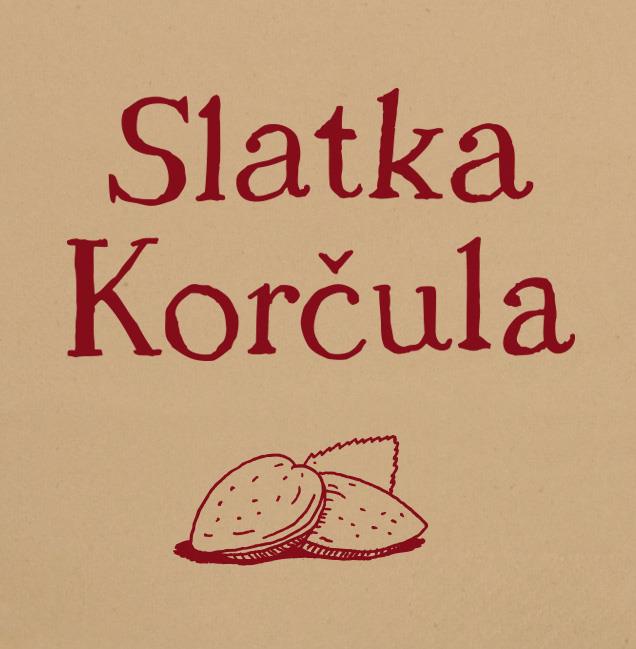
You can buy this booklet at:
Town library “ Ivan Vidali “
Flower shop “ Fiorino “
“ Manina “
“ Komo “
Tourist agency “ Kaleta “
Souvenir shop “ Suzy “
Bookshop “ Kutak knjiga “
To connect with Sweet Korcula, why not follow them on Facebook?
Looking for more delicious Korcula recipes in this series? Check them out on our dedicated TCN page.
The Complete Destination: New Promo Video from Korcula Tourist Board
February 4, 2019 - The Korcula Tourist Board kicks off its 2019 promotional campaign with a fantastic new promo video which encapsulates all the magic of this majestic town.
Trying to sum up a destination in less than two minutes on video is quite a challenge, and I have lost count of the terrible official tourism promotion videos I have been subjected to over the years.
Not this time though...
A lovely overview of one of Dalmatia's very loveliest destinations - the town of Korcula, and as presented in the latest official promotional video by the Korcula Tourist Board.
There is a little of everything to tease the would-be visitor. The fabulous compact stone town, home to Marco Polo. The luxury accommodation one would expect from such an elite destination, with the Lesic Dimitri rooms looking charming indeed. The fantastic gourmet scene, from the island indigenous whites, Grk and Posip, to the delicious local fare served on Korculan restaurants. The beaches for relaxation, the sailing for more active tourism. The tiny islets such as Badija offering day trip options. The idyllic nature, enjoyed by all visitors to the island, and one of the island's undoubted highlights of this beautiful island.
And what would Korcula be without its famous sword dancers?
As well as trying to capture the beauty of the destination, 112 seconds is really not enough time to get these messages across, and yet I think the Korcula Tourist Board has managed to achieve that with this video. If you have never been to Korcula before, take a tour in the video below. And if this is not your first visit, remind yourself why you went in the first place, and enjoy some of your favourite spots as you plan your next vacation.
To follow the latest from the island, check out our Total Korcula page.
Lastovo: Daily Connection to Dubrovnik, Better Connection to Korčula
As Morski writes on the 19th of January, 2019, solving island ferry connections in Dubrovnik-Neretva County, especially the fast-freight and ferry connections for Vela Luka in Korčula and Lastovo, was the subject of a meeting initiated by the parliamentary representative Branko Bačić with the heads of Dubrovnik-Neretva County.
County Prefect Nikola Dobroslavić initially emphasised the problems of the lack of appropriate vessels, praised the upcoming investments in port infrastructure, and seized the opportunity to discuss the upcoming daily connection between Dubrovnik and the island of Lastovo.
''Dubrovnik-Neretva County has already prepared eight funding projects from EU funds, ie through the Ministry of Maritime Affairs, Transport and Infrastructure, and this is a great success. As far as boat connections are concerned, they're better than they were before, but there are still faults to be found. The priority is to connect Lastovo with the county centre of Dubrovnik. This is a project that should have been realised a long time ago, but it's positive that we're finally close to sorting it out,'' said the prefect, adding that everything should be done to make sure that children from Lastovo can keep going to high school in their county, more precisely on Korčula, and that the construction of pupil accommodation on Korčula is something that is indispensable. He stressed that a decision to co-finance the project should be made at the upcoming session of the Croatian Government in Dubrovnik.
Parliamentary Representative Branko Bačić said that he initiated this meeting in order to reach an agreement between Dubrovnik-Neretva County, the Ministry of Maritime Affairs, Transport and Infrastructure, and Jadrolinija for the drafting of a better connection between the southern Dalmatian islands of Korčula and Lastovo, and to find a solution for the ferry service for the Split - Ubli line.
"We have to consider all the possibilities, and I still think the most realistic option is to purchase a ship of a higher capacity and a higher speed than the ships we've been using so far on that line, and to do that for as long as we don't manage to build a new ship,'' Bačić said.
The managing director of Jadrolinija announced that the company intends to purchase a second-hand ship, that there is a possibility that they still need to run some checks on, but that he wanted to hear from the representatives of the islands or the local self-government unit.
The Mayor and those from the administration, as well as participants of the meeting agreed that the purchase of a ship was the only realistic possibility at this time, as well as to take on the construction of a new ship for that line. They also demanded that the Jelena catamaran be permanently left to operate on the Split - Ubli line.
The director of the coastal maritime transport agency, Paula Vidović, stressed that maintaining the line for Lastovo at an annual level costs about 41 million kuna out of the total cost of maintaining all the lines, which amounts to about 320 million kuna.
Four major conclusions were agreed upon at the meeting:
1. It is necessary that Jadrolinija immediately looks to purchase a ship for the Split-Vela Luka-Lastovo line and continues to build a new ship for the same line.
2. There is full support for the construction of eight local and county-level ports in the area of Dubrovnik-Neretva County.
3. It was established that the Jelena catamaran, which has all of the necessary maritime capabilities alone, is permanently kept on the Split-Vela Luka-Lastovo line.
4. It is also necessary to turn the Dubrovnik-Lastovo line, for which the Government has already given its consent, into an everyday route to ensure a better connection between Lastovo with the centre of the county, and so that secondary school students from Lastovo can continue to attend secondary school on the island of Korčula.
Follow our lifestyle page for more. If it's just Dubrovnik and southern Dalmatian you're interested in, give Total Dubrovnik and Total Korcula a follow.
Sweet Korcula: Sweeties of Korcula Grannies - 19. Rozata
January 23, 2019 - Sweet Korcula, an island with a seemingly endless supply of fabulous traditional home-made cakes and desserts. We are very grateful to Franica Tasovac for allowing us to serialise her excellent books called Sweet Korcula, Sweeties of Korcula Grannies (in English). It is a collection of no less than 30 ancient recipes for Korcula cakes and desserts, lovingly put together into a book. A delightful souvenir or gift for gourmet friends. Franica has kindly allowed us to serialise the recipes on TCN, and we will be bringing you a recipe a week from the kitchens of Korcula's grandmothers throughout the year. You can read Claudia Tarle's lovely introduction here.
ROZATA
Rozata used to be cooked, but today it is baked in the oven.
4 tablespoons sugar
5 eggs
pinch of salt
500 ml of milk
5 tablespoons sugar
1 tablespoon brandy of roses
zest of one orange
It is necessary to prepare two dishes (higher and lower) where you can cook. Pour water into the larger container halfway and put to cook until boils.
Put four tablespoons sugar on low heat until it gets a nice golden brown colour.
Quickly pour the resulting caramel into the pan in which you’re going to cook rozata.
Mix gently eggs, sugar, brandy and orange zest. Pour slowly milk into the frothy egg mixture and continue stirring slowly, and then pour the mixture over the cooled caramel. Cover the container with the mixture and put in a larger vessel, and pour more water so that the upper vessel is in water. Cook rozata on low heat for an hour. Remove the cooked rozata from the container with water, let it cool down, then put in the fridge.
When rozata is cooled down well, put the larger plate over the container, turn it upside down so that rozata and caramel icing stay in the plate.

You can buy this booklet at:
Town library “ Ivan Vidali “
Flower shop “ Fiorino “
“ Manina “
“ Komo “
Tourist agency “ Kaleta “
Souvenir shop “ Suzy “
Bookshop “ Kutak knjiga “
To connect with Sweet Korcula, why not follow them on Facebook?
Looking for more delicious Korcula recipes in this series? Check them out on our dedicated TCN page.


